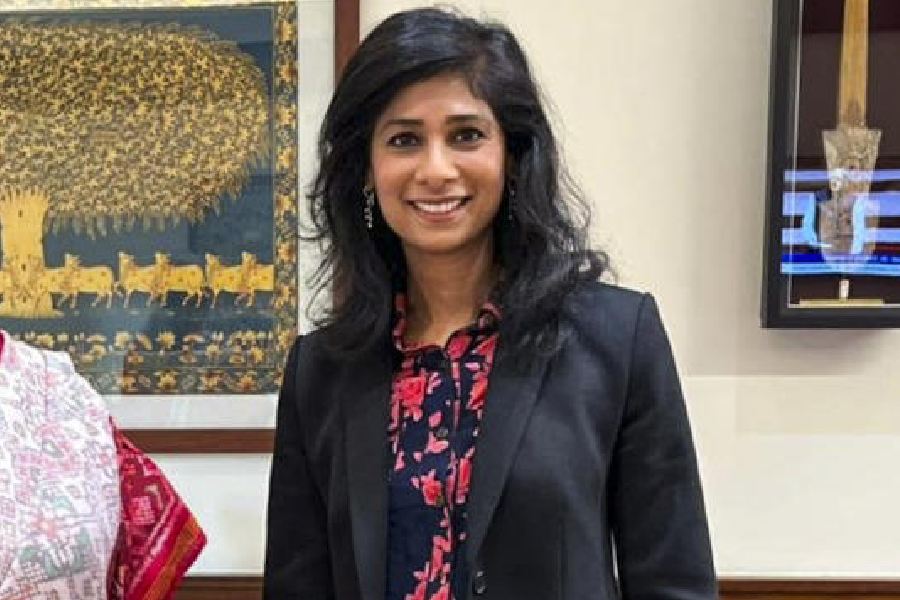 |
After the lid was blown off the Saradha Group’s Rs 1,200 crore scam in Bengal last week, all chit fund schemes are being viewed with suspicion and scepticism. However, chit fund operators elsewhere in India are making the point that all should not be tarred with the same brush. And that far from duping subscribers, bona fide chit funds actually work very well for small investors.
In fact, the All India Association of Chit Funds (AIACF) has shot off angry letters to several media houses, protesting against the loose use of the term “chit funds”, to describe residuary non-banking finance companies (RNBFCs) such as the Saradha Group that take public deposits, flouting all rules and regulations. The association, that works closely with the Union finance ministry, says fraudulent RNBFCs in Bengal are giving good chit funds a bad name.
“What people should remember is that the RNBFCs or multi-level marketing companies in Bengal selling various high-return schemes are not chit funds in the true sense of the term,” thunders T.S. Sivaramakrishnan, general secretary, AIACF, Delhi, and proprietor of Balussery Benefit Chit Fund that operates in all metros, including Calcutta. “As bona fide chit fund companies (referred to as miscellaneous NBFCs), we are not allowed to accept deposits from the public or trade in stock, equity or other cash management options.”
What’s more, activities of chit fund companies — there are many successful ones, especially in the south — are governed by the central Chit Funds Act of 1982 and Section 45 (I) of the Reserve Bank of India Act, and administered by state governments.
So, how do conventional chits (also called chittis or kuris) run? To begin with, they are an indigenous financial system, combining both savings and credit instruments. Apparently, they existed in India even before banks came into being.
A traditional chit scheme normally has a predetermined value (chit value) and duration. A particular number of members (generally equal to the duration of the scheme) are admitted into the scheme. For instance, 50 members can take part in a 50-month scheme. Each member contributes a certain sum every month to a “pot”. The “pot” is then auctioned out every month. The highest bidder (also known as the prized subscriber) wins the “pot” for that month. The bid amount (a certain percentage of the chit value) is also called the “discount”. The prized subscriber bags the sum of money equal to the chit value less the discount (the bid amount) and a fixed fee (not more than 5 per cent) to the foreman. The discount money is then distributed among the rest of the members as dividend. Next month, the required contribution is reduced by the amount of dividend.
Apart from the southern states such as Kerala, Andhra Pradesh and Tamil Nadu, chit funds are also popular in Delhi and Maharashtra. A financial services department report states that there are more than 30,000 registered chit operators across India, “generating employment opportunities for several lakh people either directly or indirectly especially in rural areas, without taking any subsidy from the government”. The department stresses these figures “speak volumes for its (chit funds) strength in our national economy”.
Indeed, companies, public and private, dealing in traditional chit schemes are doing roaring business in India. Take the Kerala State Financial Enterprises (KSFE), set up in 1969 and wholly controlled by the state government. Out of its aggregate business turnover of Rs 18,000 crore per year, around Rs 12,000 crore come from chittis (as they are known in Kerala) alone.
 |
| BRIGHT SIDE: T.S. Sivaramakrishnan |
With 460 branches in Kerala and 16 lakh subscribers, KSFE is perhaps the only profit-making chit business in the public sector — not only in India, but also elsewhere in the world, says P. Rajendran, managing director, KSFE, in Thrissur. “Chittis are a part and parcel of Kerala culture,” says Rajendran. “They are a potent savings and credit instrument for most Kerala families cutting across socioeconomic strata. Even businessmen use chits to create assets.”
Then there is the Hyderabad-based Margadarsi Chit fund, part of the Ramoji Rao group. It has a subscriber base of 4.5 lakhs, an annual turnover of Rs 7,500 crore, and operates in Tamil Nadu and Karnataka as well. According to A. Bhima Shankar Rao, a chit fund agent, Margadarsi has a well-governed management that follows the rules scrupulously. “Chit funds are popular because they provide easier access to larger sums of money than what banks offer,” says Shankar. “Moreover, if banks do not increase their interest rates, chits can provide interest up to 12-15 per cent and hence, people keep coming back to chits.”
Inspired by Margadarsi, Shriram Chits was set up in 1974. Starting with a capital of Rs 10 lakh, the firm has grown to 900 branches and has a turnover of Rs 4,300 crore. “We were careful not to expand too fast,” says A.V.S. Raja, vice-chairman and co-founder, Shriram Group, Chennai. “We grew through word of mouth — people were attracted to us because we had integrity.”
Balussery Benefit, with net owned funds of over Rs 2 crore and offering chit schemes ranging between Rs 30,000 and Rs 9 lakh per month, is another success story.
Big chit fund companies apart, self-help groups, particularly those run by women, in rural and semi-rural areas also engage in chits. Take the Beesis in Maharashtra. In a typical Beesi scheme, a married woman who is not a breadwinner, makes frequent contributions that not only provide her a safe outlet for savings but also helps her build household assets and fulfil consumption needs.
Arshad Mirza, research associate at the Small Enterprise Finance Centre in the Institute for Financial Management and Research (IFMR), Chennai, says an all-women chit fund is currently being run in a village near Shimoga, Karnataka, as part of their “randomised control trials” since 2010. “The village, which always has been very proactive about improving their lifestyle, is displaying a lot of discipline about payment,” he says.
The IFMR has been carrying out extensive surveys on chit funds under the aegis of the Bill & Melinda Gates Foundation. Even the finance ministry says in a report that this research has been an “eye-opener unravelling the inherent potential of this industry”.
However, unregistered chit funds continue to be a concern. The size of the unregistered chit fund industry is estimated to be almost 100 times that of the registered ones. As the finance ministry notes in its report, since “the growth of this unregistered sector is not in the national interest, there is an urgent need to ascertain the exact volume and take remedial measure to contain the same”.
Lawyers say there are many ways by which foremen in chit schemes can make illegal gains. “Fictitious members can be enrolled to complete the required number of subscribers in a chit series,” says Niloy Pyne, senior corporate lawyer. “If a real member is not able to offer a high discount at the auction, one of these benami members is shown to get the prize.”
But the introduction of the Chit Funds Act of 1982 in states such as Kerala last year (before this the Kerala Chittis Act, 1975, was in effect) through a Supreme Court ruling has weeded out unscrupulous players, claims Rajendran of KSFE. “Earlier, companies used to register themselves in places such as Faridabad in Haryana, where neither a state law nor the central law was in operation,” he says. “But now the law requires chit companies to register themselves in the state where they conduct the chits. Also, they need to have adequate capital and transparency to start chits. So, only companies from the organised sector can come into this field.”
According to the financial services department, the act has now been notified in all states such as Tamil Nadu, Andhra Pradesh, Karnataka, Maharashtra, Rajasthan, Uttar Pradesh, West Bengal, Delhi, Kerala and Haryana.
The Indian government too is keen to do its bit to encourage the industry’s growth. The core committee of the Key Advisory Group on chit funds under the finance ministry has made several recommendations, including those on amending the Chit Funds Act to address lacunae in the legislation, formation of grievance cells, credit rating of chit funds and so on.
AIACF sees a promising future. “Like yoga or ayurveda, the chit concept has stood the test of time and is now being revived,” says Sivaramakrishnan.
Clearly, one rotten apple called Saradha is unlikely to derail the success story of bona fide chit funds in the country.
Clean Chit
Prominent chit funds in south India
Balussery Benefit Chit Fund. Running since 1947
Margadarsi Chit Fund. Running since 1962
Kerala State Financial Enterprises. Running since 1969
Shriram Chits. Running since 1974
Kapil Chit Funds. Running since 1981
Pooram Kuries. Running since 1995










